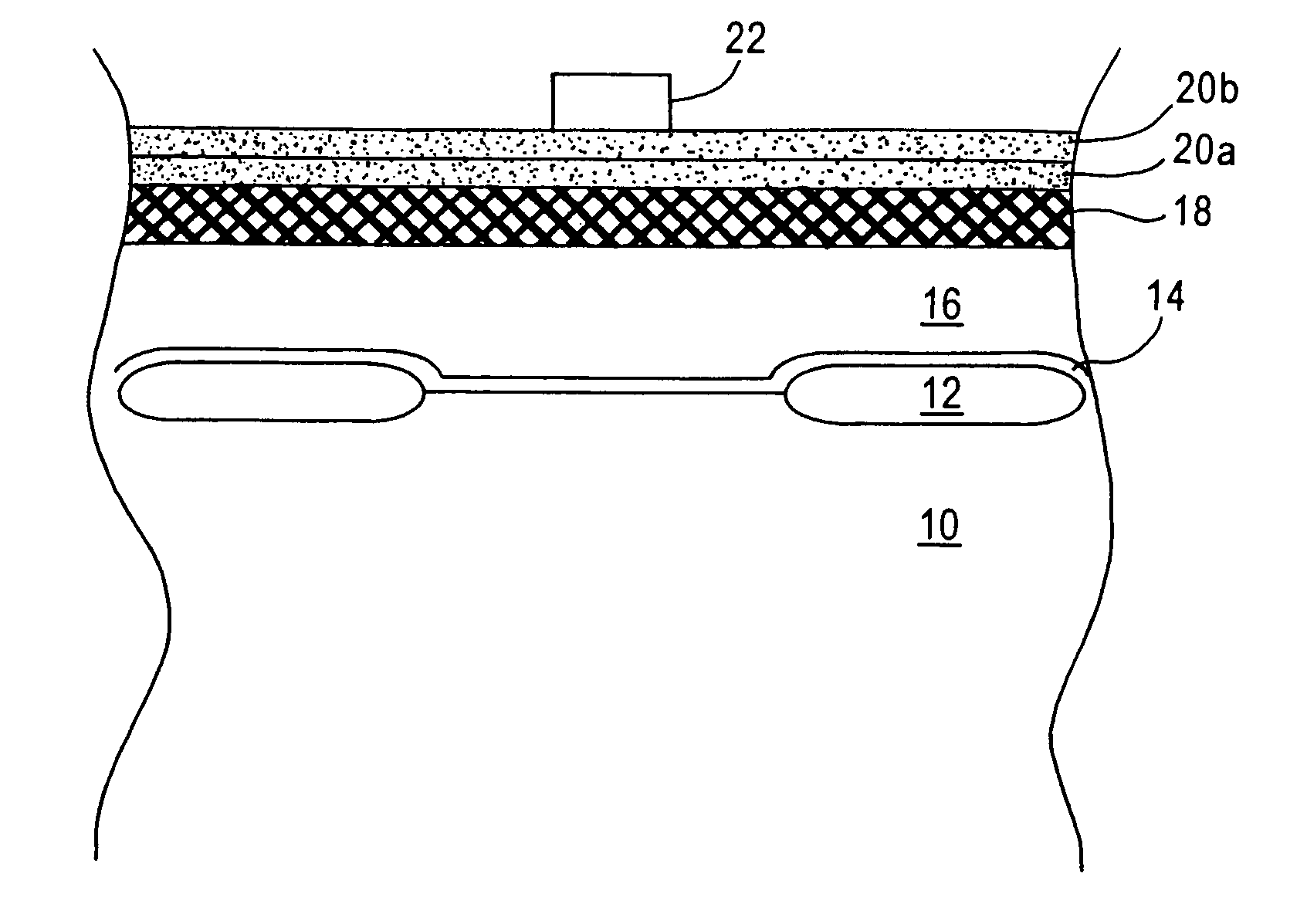Multi-chamber deposition of silicon oxynitride film for patterning
a silicon oxynitride and patterning technology, applied in chemical vapor deposition coatings, coatings, semiconductor devices, etc., can solve the problems of reducing the thickness of the overlying arc/hardmask, localized non-uniformities in the pecvd silicon oxynitride layer, and dimensional accuracy issues, etc., to achieve accurate dimensioning of device features, enhanced chemical vapor deposition, and improved reliability
- Summary
- Abstract
- Description
- Claims
- Application Information
AI Technical Summary
Benefits of technology
Problems solved by technology
Method used
Image
Examples
Embodiment Construction
[0018]As semiconductor device feature sizes shrink into the deep-submicron regime, various dimensional accuracy issues arise impacting device reliability. As gate widths plummet to 400 Å and under, it is necessary to reduce the thickness of the ARC / hardmask employed for patterning the gate electrodes. However, such reduction in the ARC thickness generates pinholes causing photoresist poisoning and hardmask etching, thereby adversely impacting the critical dimension.
[0019]These problems were addressed in copending application Ser. No. 10 / 256,368 filed on Sep. 27, 2002 now U.S. Pat. No. 6,803,313, by forming a plurality of silicon oxynitride layers over the amorphous carbon layer. This technique was said to reduce the pinhole density at the surface of the uppermost ARC sub-layer. By providing multiple ARC sub-layers the chance of a pinhole extending from the bottom layer through a line with a pinhole in the top layer was remote. Suitable ARC materials include silicon oxynitride, silic...
PUM
| Property | Measurement | Unit |
|---|---|---|
| density | aaaaa | aaaaa |
| density | aaaaa | aaaaa |
| refractive index | aaaaa | aaaaa |
Abstract
Description
Claims
Application Information
 Login to View More
Login to View More - R&D
- Intellectual Property
- Life Sciences
- Materials
- Tech Scout
- Unparalleled Data Quality
- Higher Quality Content
- 60% Fewer Hallucinations
Browse by: Latest US Patents, China's latest patents, Technical Efficacy Thesaurus, Application Domain, Technology Topic, Popular Technical Reports.
© 2025 PatSnap. All rights reserved.Legal|Privacy policy|Modern Slavery Act Transparency Statement|Sitemap|About US| Contact US: help@patsnap.com



